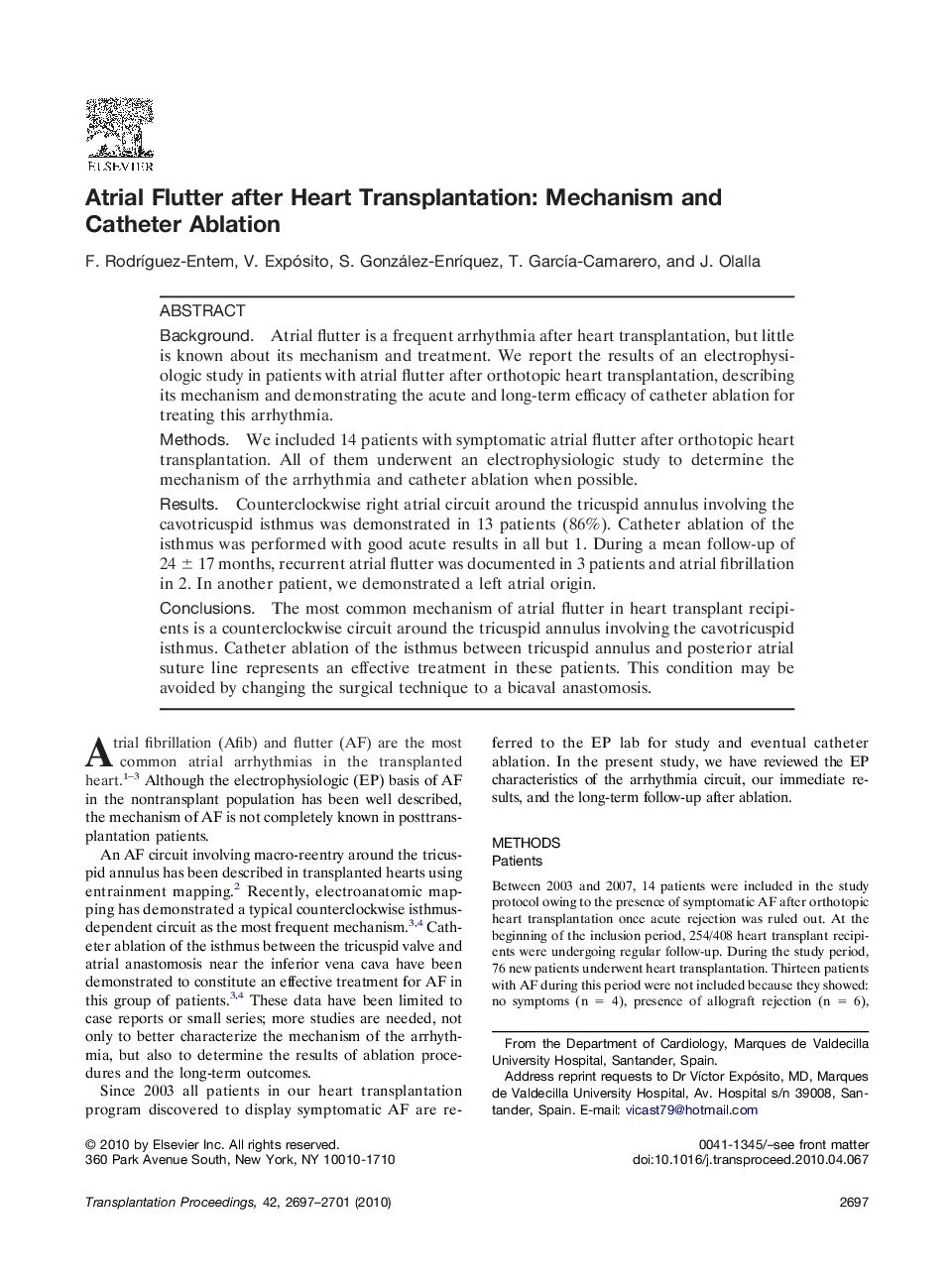| Article ID | Journal | Published Year | Pages | File Type |
|---|---|---|---|---|
| 4259465 | Transplantation Proceedings | 2010 | 5 Pages |
BackgroundAtrial flutter is a frequent arrhythmia after heart transplantation, but little is known about its mechanism and treatment. We report the results of an electrophysiologic study in patients with atrial flutter after orthotopic heart transplantation, describing its mechanism and demonstrating the acute and long-term efficacy of catheter ablation for treating this arrhythmia.MethodsWe included 14 patients with symptomatic atrial flutter after orthotopic heart transplantation. All of them underwent an electrophysiologic study to determine the mechanism of the arrhythmia and catheter ablation when possible.ResultsCounterclockwise right atrial circuit around the tricuspid annulus involving the cavotricuspid isthmus was demonstrated in 13 patients (86%). Catheter ablation of the isthmus was performed with good acute results in all but 1. During a mean follow-up of 24 ± 17 months, recurrent atrial flutter was documented in 3 patients and atrial fibrillation in 2. In another patient, we demonstrated a left atrial origin.ConclusionsThe most common mechanism of atrial flutter in heart transplant recipients is a counterclockwise circuit around the tricuspid annulus involving the cavotricuspid isthmus. Catheter ablation of the isthmus between tricuspid annulus and posterior atrial suture line represents an effective treatment in these patients. This condition may be avoided by changing the surgical technique to a bicaval anastomosis.
